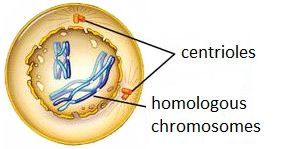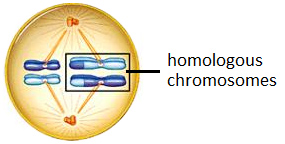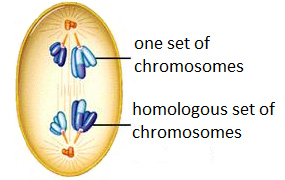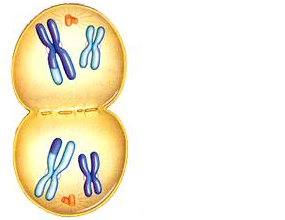Meiosis involves two distinct stages called meiosis I and meiosis II. By the end of meiosis II, the diploid cell becomes 4 haploid cells. In this section we will look at the phases of meiosis I.
![]() Watch this short video to see what happens in each stage of meiosis I.
Watch this short video to see what happens in each stage of meiosis I.
Just prior to meiosis I, the cell undergoes a round of chromosome replicate during interphase. As in mitosis, each replicated chromosome consists of two chromatids joined in the center.
In prophase I of meiosis the chromosomes are doubled due to replication. So in humans there would be 92 chromosomes. Each replicated chromosome pairs with its corresponding homologous chromosome. The pairing forms a structure called a tetrad, which is four chromatids. As homologous chromosomes pair up they undergo a process called crossing-over. First, the chromatids of the homologous chromosomes cross over one another. Then, the crossed sections of the chromatids are exchanged. Crossing over produces new combinations of alleles in the cell which leads to variety.

The images below show prophase I.


During metaphase 1 paired homologous chromosomes line up across the center of the cell. Notice in the pictures below that the chromosomes are lined up in the middle of the cell.


During anaphase I, spindle fibers pull each chromosome pair toward opposite ends of the cell. In the pictures below, notice how the chromosomes are being pulled away from the center.


When anaphase is complete, the separated chromosomes cluster at opposite ends of the cell. In telophase a nuclear membrane forms around each cluster of chromosomes. Cytokinesis follows telophase 1 and 2 new cells are formed.


Meiosis I results in two cells, called daughter cells. However, because each pair of homologous chromosomes was separated, neither daughter cell has the two complete sets of chromosomes that it would have in a diploid cell. Those two cell produced by meiosis I have sets of chromosomes and alleles that are different from each other and from the diploid cell that entered meiosis I.